It is often believed that outer appearances can be deceptive. It is the inner beauty that matters the most. While this might hold true in life, but in Architecture, the facade – the outer skin is as important as the interiors. The facade usually represents the identity of the building. It showcases what the building stands for or what value the design wants to preach. Let us now look at some path-breaking facade designs and their respective ideologies.
THE POMPIDU CENTRE
Paris, France
Building Type: Cultural Centre
Architects / Designers: Renzo Piano, Richard Rogers
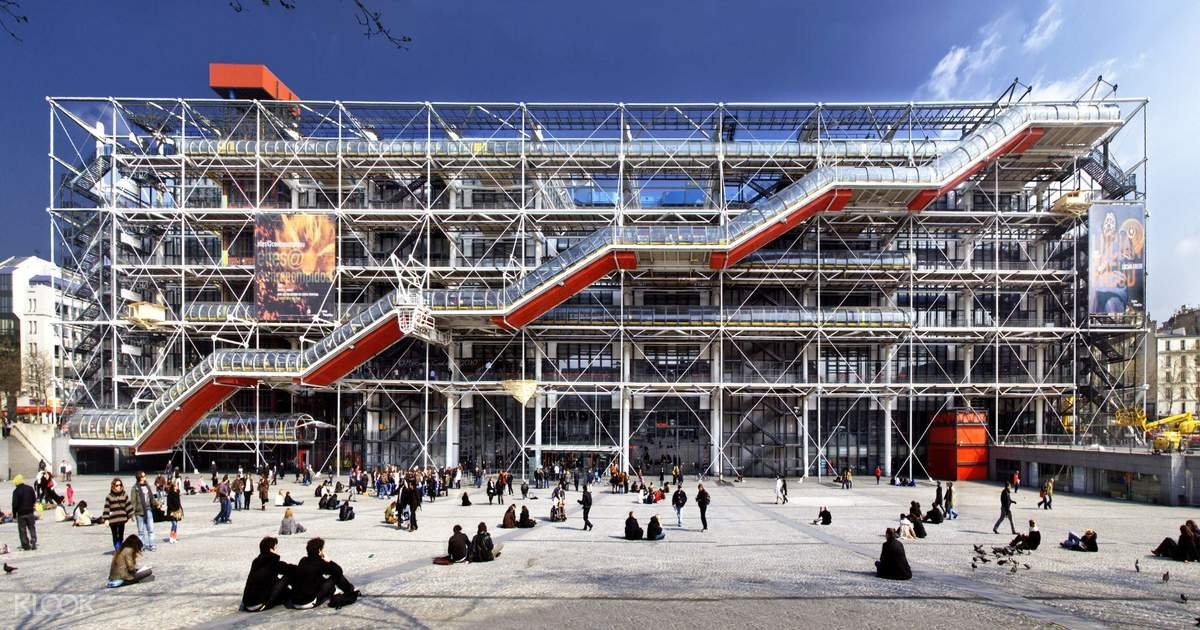
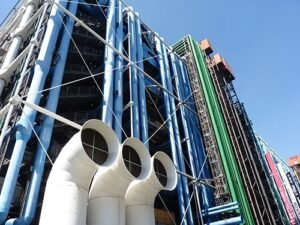
In times when designers choose to give their buildings a cleaner, concealed seamlessly look, the Pompidu centre stood against these stereotypes, Richard Rogers and Renzo Piano decided to experiment and redefine the ‘beauty’ in building facades. The intricacies involved in construction were openly welcomed and displayed onto the facade. Also, the façade had different systems viz. HVAC, Structural, Plumbing etc. painted in different colours so as to add on the idea of viewing the buildings as a ‘Process’. Moreover, the pipes going up and down painted in vibrant colours added a sense of play and movement to the facade.
COLLAGE HOUSE
Navi Mumbai, India
Building Type: Residential
Architects / Designers: S+PS Architects, Mumbai
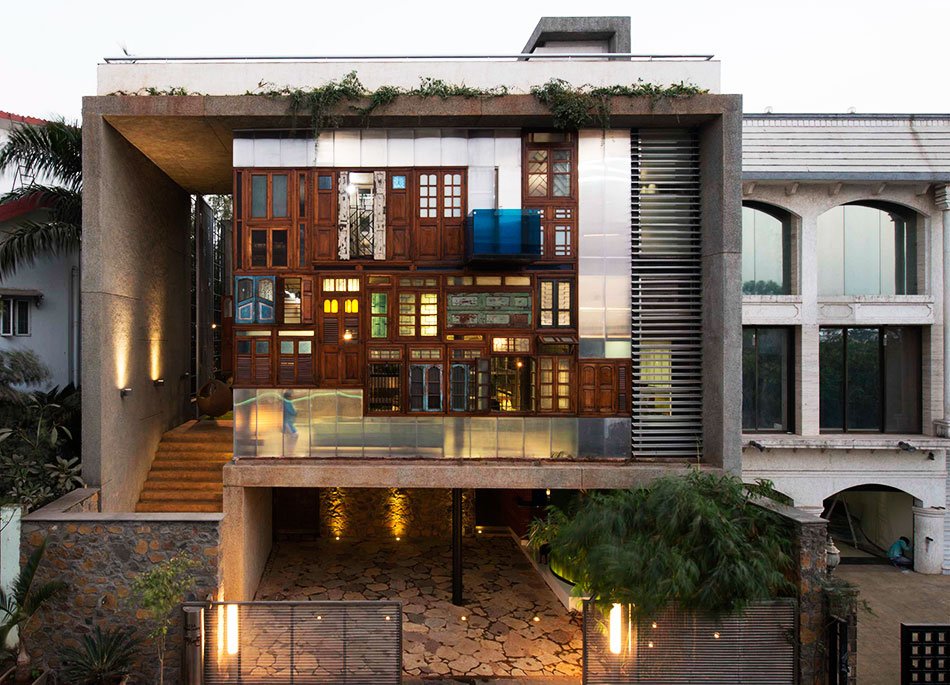
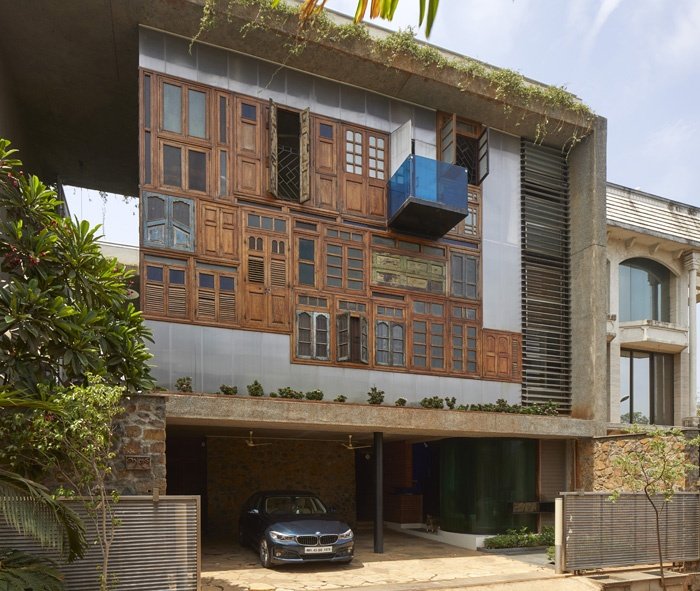
Creativity is never dependent on the scale of the project; innovation lies in the smallest details. Collage House, Navi Mumbai is a perfect example of this fact. Despite being a private residential project, the Architects at S+PS have managed to put together a very innovative and ‘Out of the Box’ façade. The usage of different materials and multi-level spaces all bound together with a single concrete frame is worth mentioning about this project. Apart from the aesthetics, the project helps in reusing the construction waste. The pipe wall made of the waste pipes, The front facade that forms a ‘collage’ of all the waste doors and windows from construction & demolition sites, waste stones, wall clad with waste metal plates, unused blocks printing blocks etc showcase an excellent continuity of thought that is sustainable & innovative.
AL BAHAR TOWERS
Abu Dhabi
Building Type: Office Building complex
Architects / Designers: Aedas, London; Arup

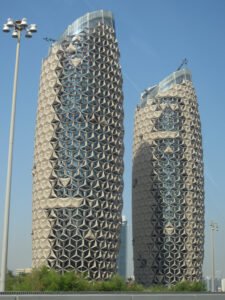
The facade of the Al Bahar towers innovative and highly adaptive. This facade is like a one-stop solution to all the design concerns. While the glazed facade aids the aspiration of establishing ‘modernity’, the cylindrical envelope ensures a visual connect with the surroundings. The most important concern of keeping the harsh sun in this region out and especially in such a highly glazed building. This issue was taken care of by the triangulated shading system that adapts its geometry with the help if the sun position tracker software thus ensuring maximum thermal comfort, daylighting and sustainable habitat. But that’s not all; the facade also takes care of aesthetics and regional culture. In addition to being an aid to the harsh climate, the shape & pattern of the shading feature also resembles the local Arabic architectural feature ‘Mashrabiya’ an oriel window thus naming the shading panels as ‘Mashrabiya panels’.
Manuel Gea Gonzalez Hospital
Mexico
Building Type: Healthcare & Hospitality
Architects / Designers: Ellegant Embellishments
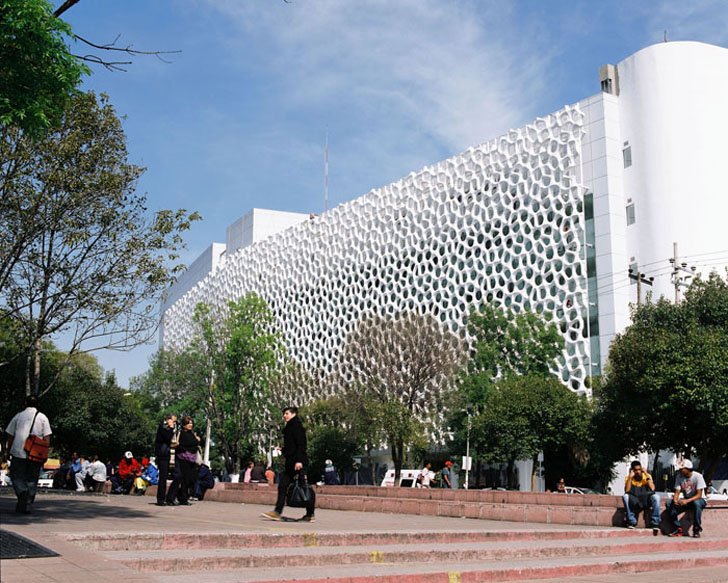
The ‘smog-eating façade’ at the Mexico city hospital not only redefines the monotonous look of the original façade but also helps in cutting down the pollution. The facade is made of a pigment called as proSolve 370e which is known to react with UV rays & with urban pollution thus breaking the complex pollutants down into less harmful and simple substances like Carbon dioxide and water. Moreover, the facade has set a visual identity for the building while also clearing up the pollution generated by 1000 vehicles in the Mexico city on per day basis. In addition to this. The tiles screen on the main façade is also known to filter sunlight, thus reducing the internal temperature saving on air conditioning costs and emissions of harmful pollutants into the air.
Conclusion
Innovative Facades are more than just being aesthetic. It can be functional, sustainable and sometimes even be unconventional. What matters the most is how innovation helps in solving issues efficiently and yet manages to set an identity for the building.

